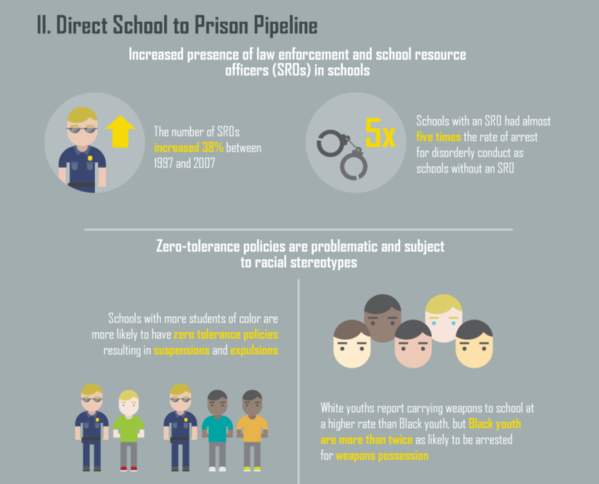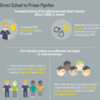
The state of the juvenile correction system in America is dreadfully lacking in effectiveness and is increasing in population year-over-year. The US has the highest youth incarceration rate in the world with 336 juvenile incarcerations per 100,000 youth – nearly five times as many as the second highest country.
• Only 12% of America’s youth is incarcerated after committing violent crimes. Most commit misdemeanors land them in residential facilities.
• New York in 2007 incarcerated 53% of youth convicted of misdemeanor offenses.
• Florida in 2008-2009 incarcerated 58% of youth convicted of misdemeanors.
Direct School to Prison Pipeline
The prevalence of zero-tolerance programs and schools suspending and expelling students for minor offenses, coupled with racial prejudices, are directly influencing the high incarceration rate of minors in the US. As more of our youth go directly from school to prison, the future of our young spirals quickly in a downward descent. Hope for the future can only be inspired by investing in the growth of our youth, not in their continued imprisonment.
Inadequate Care During Incarceration
Not only are America’s youth ending up in prison at higher rates than ever, they’re also not receiving appropriate care during their imprisonment:
• Almost 30% of jail inmates younger than 24 report having a learning disability
• A Bureau of Justice Statistics survey found 40% of jails provide no educational services
• 75% of all deaths in youth under 18 in adult jails were due to suicide
• 3 of every 10 youth confined in correctional facilities had attempted suicide at least once
Juvenile Incarceration is Ineffective
• Once released, 69% of families reported having difficulty getting their child back in school
• 70 to 80% of youth are rearrested within 2-3 years following release from residential corrections programs
• 38 to 58% of released youth are found guilty of new offenses (as a juvenile or an adult) within 2 years
Financial Burden
• In one survey of families of court-involved youth, over 50% of family members reported that their households live on less than $25,000 year
• 1 in 3 families said they have had to choose between paying for basic necessities like food and making court related payments
• In 2007, states spent approximately $5.7 billion locking up 64,558 youth at an average cost of $240.99 per day
To learn more about the incarceration of youth in the US, checkout this infographic below created by Boston University’s Master of Criminal Justice Online program.



Comments (1)